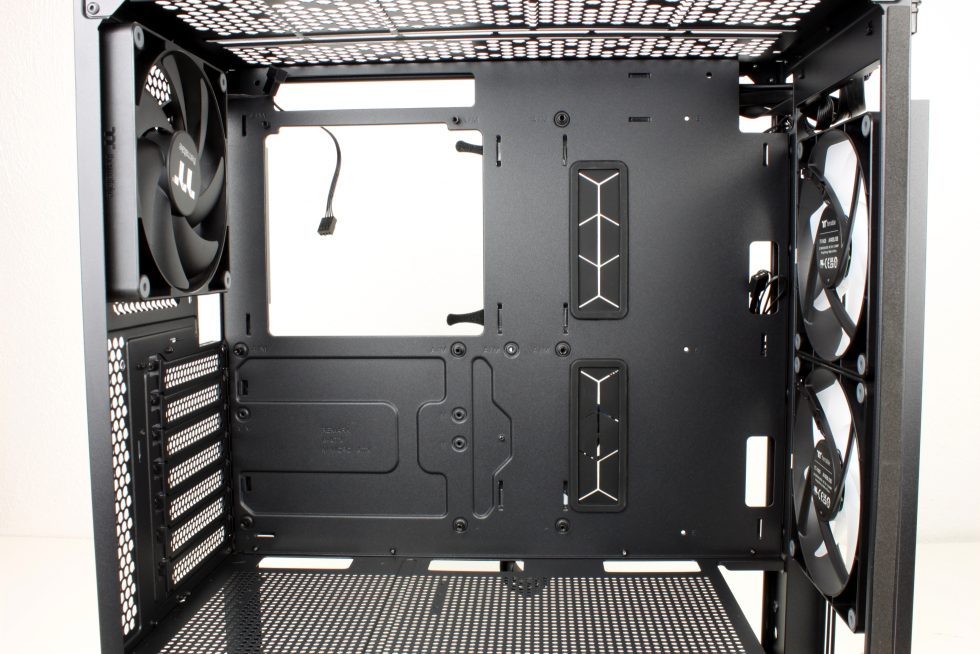Technical data
As always, let’s start with the technical data in tabular form.
Features
I already showed most of the features in the unboxing part, but I’ll go into some specifics again in detail.
Dust filter
Apart from the welcome fact that virtually every air intake is also equipped with a dust filter, Thermaltake has thought along with the Ceres 300 and made the lower dust filter removable from the front.
Vertical GPU mounting
The patented system makes it easy to rotate the PCIe slots to mount a graphics card vertically.
Efficient ARGB fans
The two 140mm ARGB fans can not only move air quite quietly but also in an extremely pretty way. It’s a bit annoying that the Exhaust fan isn’t available in the ARGB version.
Airflow
55% of the Ceres 300’s surface is perforated. Coupled with extensive fan mounting options, this results in excellent airflow.
Water cooling
Of course, various AIOs and radiators for custom loops can also be mounted in the Ceres 300.
At this point I would like to respond to a request from several readers. Often the manufacturers specify, as in the previous picture, which radiators fit where in the case in question. However, they generally refrain from specifying the possible combinations. If it says: Front 360mm, lid 280mm, then it usually fits in the case, but often not in combination or at the same time. I promised that I would get some radiators especially for this purpose and take a closer look at the issue in the future, and this review is the first time that promise has been kept. Our friends at Thermaltake and BeQuiet! were able to support us in our endeavor and provide some models. However, Thermaltake’s thick baller (Pacific RL360) with a fat 64mm height is a bit too much of a good thing for the compact Ceres 300.
A 360mm AIO would fit in the lid, but officially no 360mm radiator is supported there.
I can’t recommend it either because the space for the rear fan is completely blocked by the radiator, so there wouldn’t even be room for a 120mm fan there.
In the front 360mm and in the lid 240mm would fit.
With this combination, there would still be room for the rear fan.
In terms of surface area, the ideal configuration would probably be 280mm radiator in the front and 280mm radiator in the lid.

















































37 Antworten
Kommentar
Lade neue Kommentare
Urgestein
Urgestein
Mitglied
Neuling
Urgestein
Urgestein
Urgestein
Urgestein
Veteran
Urgestein
Veteran
Urgestein
Veteran
Urgestein
Urgestein
Veteran
Urgestein
Urgestein
Veteran
Alle Kommentare lesen unter igor´sLAB Community →